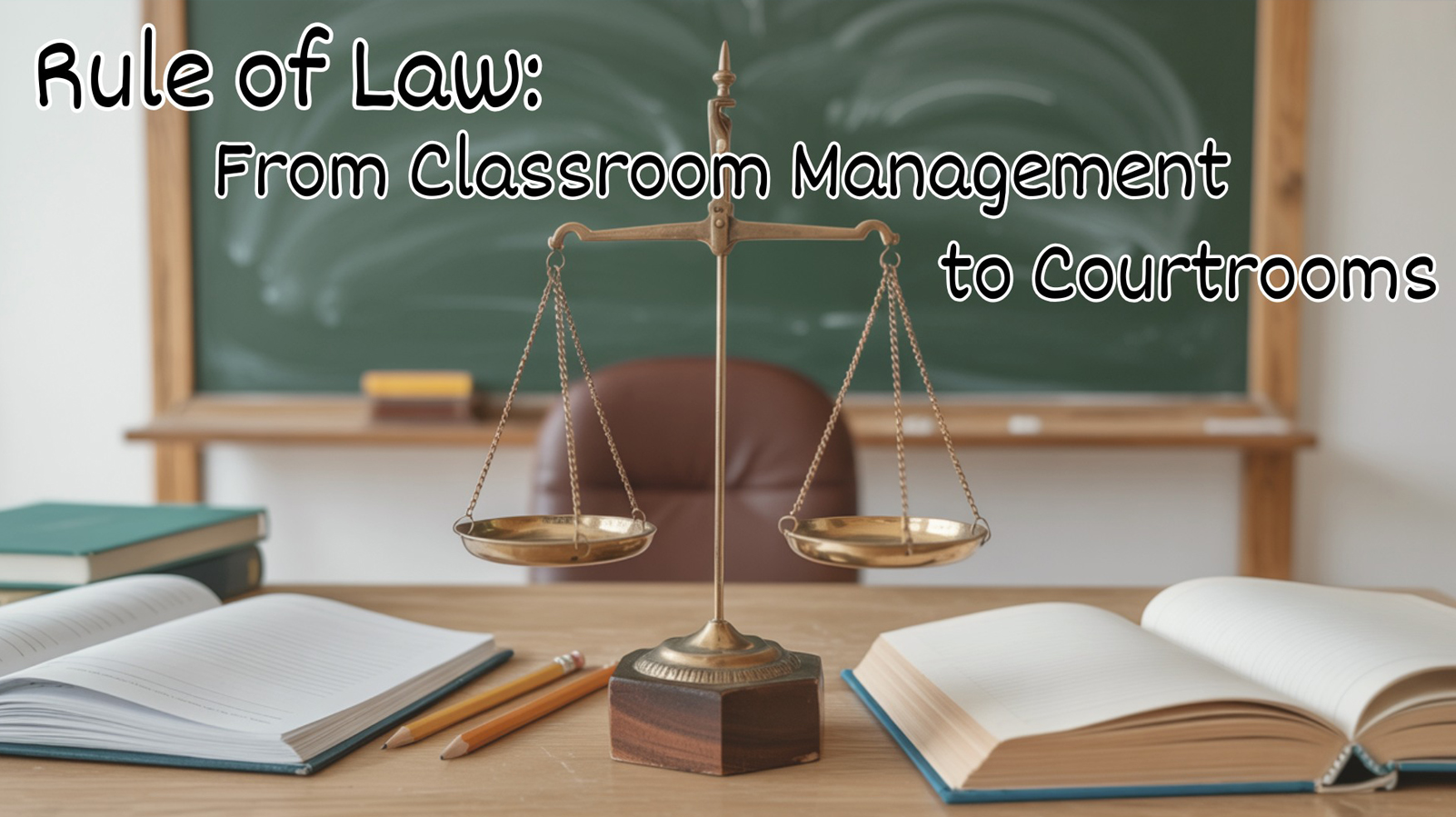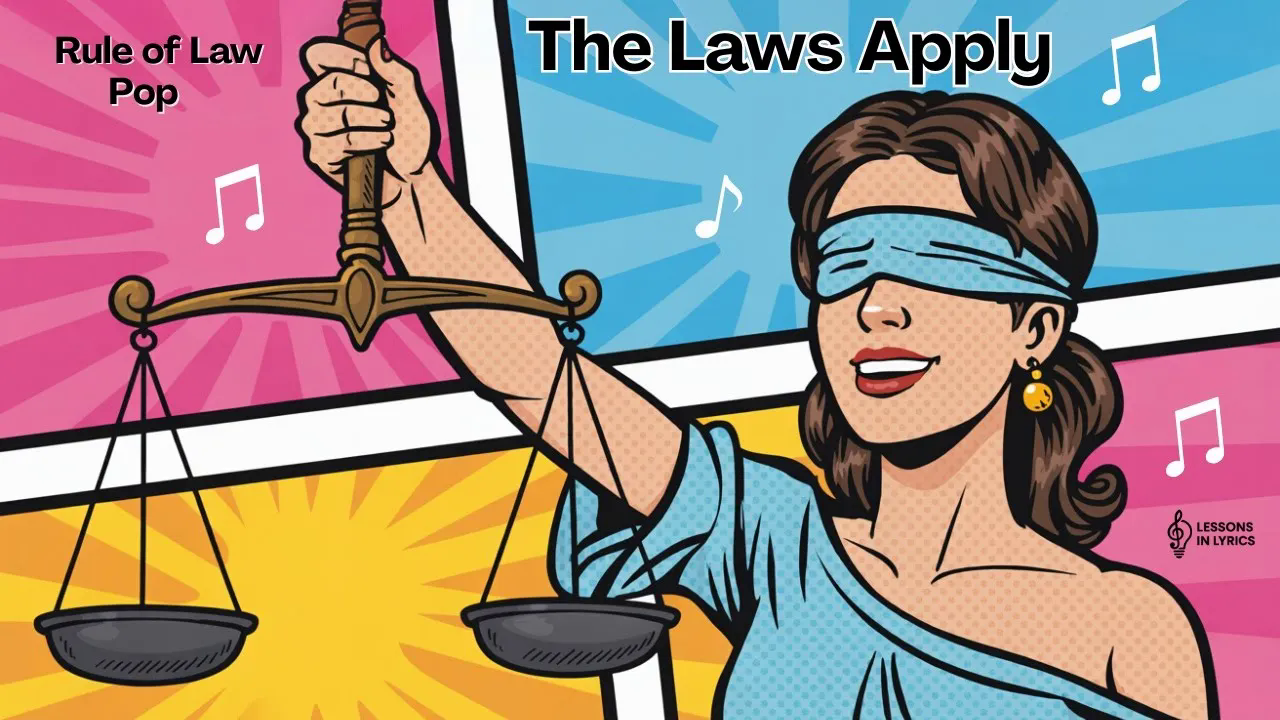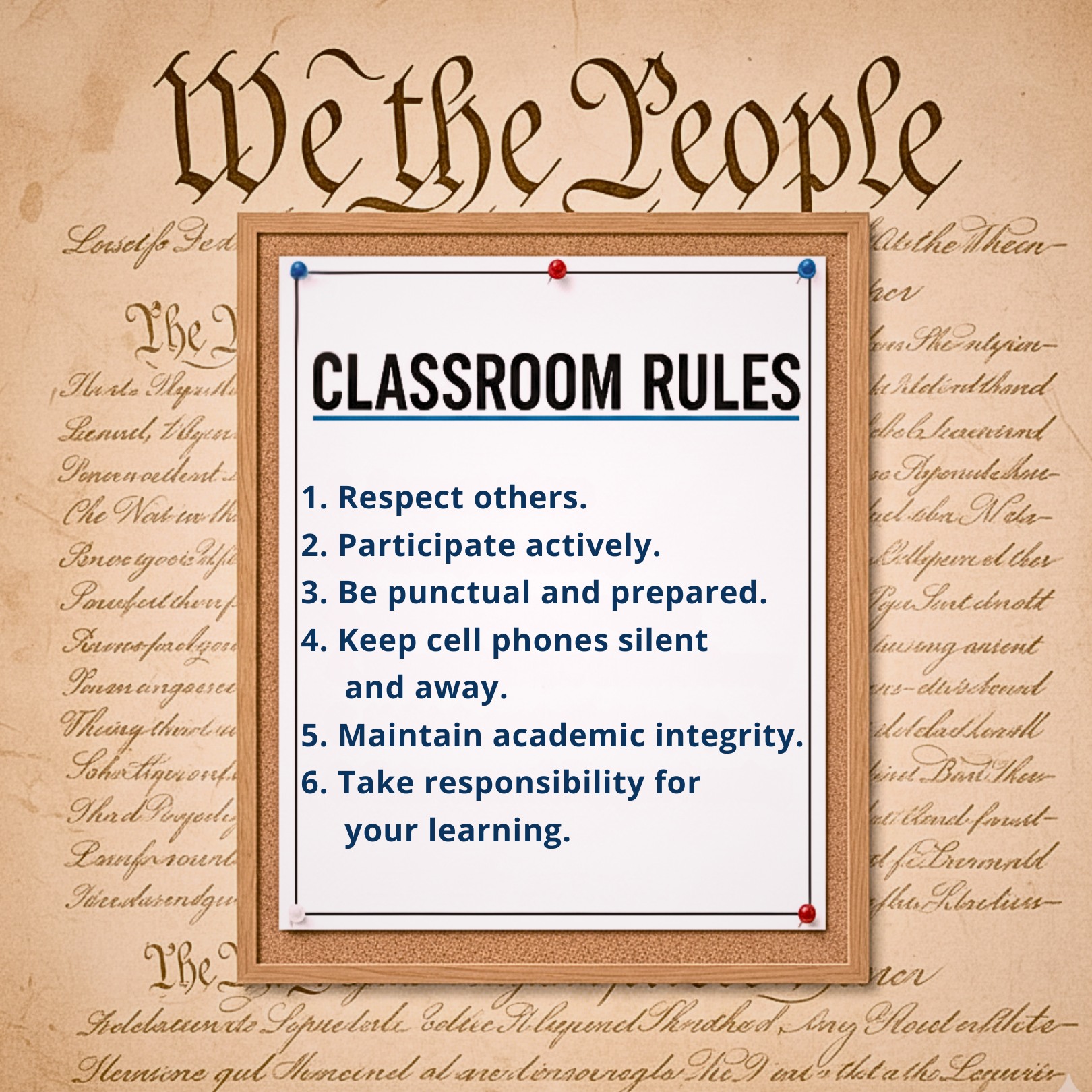
Subscribe Now to Stay in the Loop
Stay updated on new videos, fresh resources, and student contest announcements.
Every teacher knows the power of rules. Rules keep classrooms from falling into chaos, set expectations, and help create a space where every student can learn. But rules do more than just manage behavior. They model a deeper civic principle that students will encounter throughout their lives: the Rule of Law.
The Rule of Law is a cornerstone of free societies. It means that laws apply equally to everyone. No one—whether a president, a judge, or a classroom favorite—is above the law. And no one—whether a struggling student, a quiet kid, or someone without much influence—should be outside its protection.
When we help students understand the Rule of Law through classroom experiences, we not only improve management and fairness but also give them a lived example of how cooperation and trust are built in a healthy society.
Why Consistent Rules Matter in the Classroom
Imagine two scenarios:
- In Classroom A, the “no late homework” rule is enforced strictly for some students but overlooked for others. The class clown gets a laugh and a pass, while the quiet student receives a zero.
- In Classroom B, the same “no late homework” rule applies to everyone. The teacher enforces it consistently, but also makes the policy clear, fair, and visible from the start.
Which classroom feels more just? Which one builds trust between teacher and students?
Inconsistent or unequal enforcement of rules undermines respect. Students quickly sense favoritism or double standards, and that erodes both classroom culture and their understanding of fairness in society. Consistent rules, on the other hand, reinforce the message: everyone is equal before the law. When that happens, order isn’t maintained through fear or favoritism—it’s maintained because students know they’re part of a fair and cooperative community.
Rule of Law in Schools: Key Parallels
Here are some ways the Rule of Law shows up in your daily teaching:
- Clear expectations: Just as citizens must know the law, students must understand the rules. Rules should be written, communicated, and reviewed, especially at the start of the year.
- Equal application: Whether it’s a top student, a new student, or a frequent rule-breaker, the consequence for breaking the rule should be the same. Equality under the law only works if it applies to everyone.
- Consistent enforcement: A law unenforced is no law at all. If the rule against phones is sometimes ignored, it loses meaning. Students learn that rules are arbitrary instead of reliable.
- Fair consequences: Rules should not be designed to trap or punish but to guide and protect. In both society and schools, rules should support cooperation and respect, not create resentment.
Beyond “Because I Said So”
One of the temptations in classroom management is to rely on authority alone: “Because I said so.” But just as in civic life, rules should have a clear purpose. If students understand why the rules exist—why they matter for fairness, safety, or respect—they’re more likely to follow them and less likely to feel resentful.
Consider connecting rules to broader ideas:
- “We raise our hands before speaking because it ensures every voice has a chance to be heard.”
- “We keep phones put away because learning requires focus.”
- “We respect deadlines because responsibility and preparation matter beyond this classroom.”
This shifts the emphasis away from force and toward cooperation. Just as laws in society should foster peace and trust rather than arbitrary control, classroom rules should create an environment where students see the value of living and learning together.
Lessons in Lyrics: Teaching Rule of Law with Music
Sometimes a song can explain a concept better than a lecture. That’s why Stossel in the Classroom created Lessons in Lyrics videos on the Rule of Law. The music videos explore the idea that no one—not even leaders—should be above the law, and that rules must be applied fairly if they are to mean anything at all.
Pairing the video with classroom discussion can help students connect their lived experience of school rules with the larger principle of equality under the law. Some possible discussion questions include:
- What happens in school when rules are applied differently to different students?
- Can you think of examples from history or current events where leaders were held accountable under the law? Where they weren’t? How does this impact society as a whole?
- Why is it important that laws apply equally to both powerful and ordinary people?
- How would you feel if one group in society had to follow rules that another group could ignore?
When students draw these connections, they see that fairness in the classroom is not just about behavior—it’s practice for citizenship.

The Civic Stakes
The Rule of Law is more than a classroom management strategy. It’s one of the foundations of American government. When the Founders designed the Constitution, they rejected the idea of arbitrary rule by kings. They wanted laws—crafted through representative government—that bound everyone equally.
Without Rule of Law, societies fall into corruption and instability. Leaders pick winners and losers. Citizens lose trust. The same is true in schools: when rules are applied unevenly, students disengage, act out, or lose respect for authority.
By making the Rule of Law visible in your classroom, you give students daily practice in living out this civic principle. They learn that fairness isn’t just an abstract idea; it’s something they experience in their own community. And just like in society, fairness creates the harmony that allows everyone to prosper together.
Classroom Applications
Here are some practical strategies you can try:
- Post your rules clearly and review them often. Make sure every student understands them.
- Apply consequences consistently. If you find yourself making exceptions, ask: Would I make this same exception for every student?
- Explain the purpose behind each rule. Connect it to fairness, safety, or respect, rather than “because I said so.”
- Reflect as a class. Ask students whether the rules feel fair. Encourage them to suggest improvements, just as citizens participate in shaping laws.
- Connect to civics. Use moments of classroom management as opportunities to talk about equality under the law.
Closing the Loop: From Schools to Society
Every classroom is a mini-society. When rules are applied fairly and enforced consistently, students see firsthand how justice works. When they are not, students experience the frustration that citizens feel when laws are unfairly applied.
By modeling the Rule of Law in your classroom, you do more than create order. You give your students an early lesson in one of the most important civic principles they’ll need as adults. From the classroom to the courtroom, the Rule of Law protects liberty and builds the trust necessary for people to live, learn, and thrive together.
So the next time you enforce a rule—fairly, clearly, and consistently—remember: you’re not just managing a classroom. You’re nurturing the harmony and cooperation that form the bedrock of a free and prosperous society.


